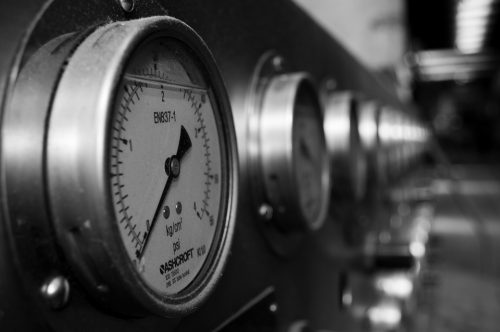Disclosure: In any review for a product or service, products or compensation may have been provided to me to help facilitate my review. All opinions are my own and honest. I am disclosing this in accordance with FTC Guidelines. Please see “Disclose” and "Terms of Use" tabs for more information.
While choosing the right flow meter measurement solution for your system is crucial and vital, your aptness to depend on the meter’s readings will highly rely on the application. Each flow meter technology will, for sure, have its pros and cons. However, it is the fine distinction of your system, and what’s traversing through it that should get the most attention.

For example, you are dealing with water-based applications. For water applications, there are plenty of different technologies that can perform well. However, is the water ionized? Does it have particles or bubbles?
Once you answer such questions, you will easily know what type of flow meter will best work for your system. And for water applications, ultrasonic and magnetic flow meters have risen up to fame. Which is better? For more information, this post will walk you through the advantages and disadvantages of the two measurement technologies.
Magnetic Flow Meters
Magnetic flow meters also called magmeters, are used to calculate flow rates by applying the Electromagnetic Induction of Faraday’s Law. With this measurement technology, a magnetic field is, for the most part, made by providing current through a magnetic coil resonating the flow tube.
The conductive liquid or media then produces a voltage as it traverses through the magnetic field of the meter and flow tube. The electrodes can feel and calculate the voltage made as, more often than not, the liquid traverse through the pipe.
The higher the velocity, the greater the voltage. Therefore, it creates a consistent signal that’s, for the most part, transformed into a volumetric flow. Magnetic flow meters, such as smart measurement magnetic flow meters, are specifically engineered for systems that deal with conductive fluids such as slurries, caustic liquids, acids, and water.
Advantages
- Magnetic flow meters have a service life of about 75 years.
- Magnetic flow meters have the capability to register remotely, local energy management system.
- Magnetic flow meters are available in an extensive variety of communication protocols.
- Magnetic flow meters are applicable or suitable to liquids with massive particulates.
- Magnetic flow meters can react well to expeditious changes in flow.
- Magnetic flow meters don’t need straight run and are applicable to nearly all flow profiles.
- Magnetic flow meters are unaffected by pressure, temperature, and viscosity as long as the magnetic flow meter is chosen based on the process conditions.
- Magnetic flow meters are available for pipe diameters from .10 inches to 120 inches.
- Almost zero pressure drop and no flow obstructions or moving parts.
Disadvantages
- The preciseness might be influenced by air space in the pipeline.
- The water flowing in the pipe must have a certain quantity of Microsiemens, providing it the power to conduct electricity or heat.
Ultrasonic Flow Meters
The ultrasonic flow meter will, for the most part, recognize and calculate flow rates without using moving parts or infiltrating the flow stream. In order for it to perform well, they apply one of the two following ideas of operation.
The first principle is Transit-Time Ultrasonic Flow Meters. It sends or transmits a sound wave via the flow, depending on the time difference between the downstream and upstream times of flight. The difference in time is equivalent to the flow’s velocity.
This measurement technology is not applicable for water-based applications with high concentrations of suspended particles or heavy aeration because it can impede or block the sound waves. Nevertheless, they’re more suitable for ultra-pure and clean flows.
The second principle is the Doppler Ultrasonic Flow Meters. Like the Transit-Time Ultrasonic Flow Meters, it also transmits sound waves into the flow. However, the Doppler Ultrasonic Flow Meters rely highly on suspended particles and bubbles in the water to send back the sound waves, creating a change in the frequency.
Any change in the frequency is equivalent to the flow velocity. Thus, Doppler Ultrasonic flow meters are applicable for impure or aerated water applications, such as waste-water.
Advantages
- It is able to interface or interact with an energy management system.
- It is available in many communication protocols.
- It is not susceptible to changes in pressure, density, viscosity, and temperature.
- It can be used with abrasive fluids.
- It requires less maintenance.
- It won’t contaminate or obstruct the process.
- Low-cost.
Disadvantages
- The accuracy might be influenced by the size dispersal of particles.
- The accuracy might be influenced by air space in the pipeline.
- The fouling, pitting, and scaling that can happen in the long run in older pipe systems can be a huge problem.
- Any unknown piping variables can change the flow signal and make inaccuracies.
Takeaway
Choosing the right flow meter for the right application is crucial in a fluid measurement project. With that said, you need to do your research beforehand. Learn all the advantages you can get as well as the drawbacks to prevent any mishaps in the future.
Author’s bio:
Sylvia Hopkins is a writer and a blogger who specializes in email marketing campaigns and ghost blogging. She writes about flow measurement instrumentation, flow measurement application, and technology. When not working, Sylvia spends some quality time with her family and friends.
















Speak Your Mind
You must be logged in to post a comment.